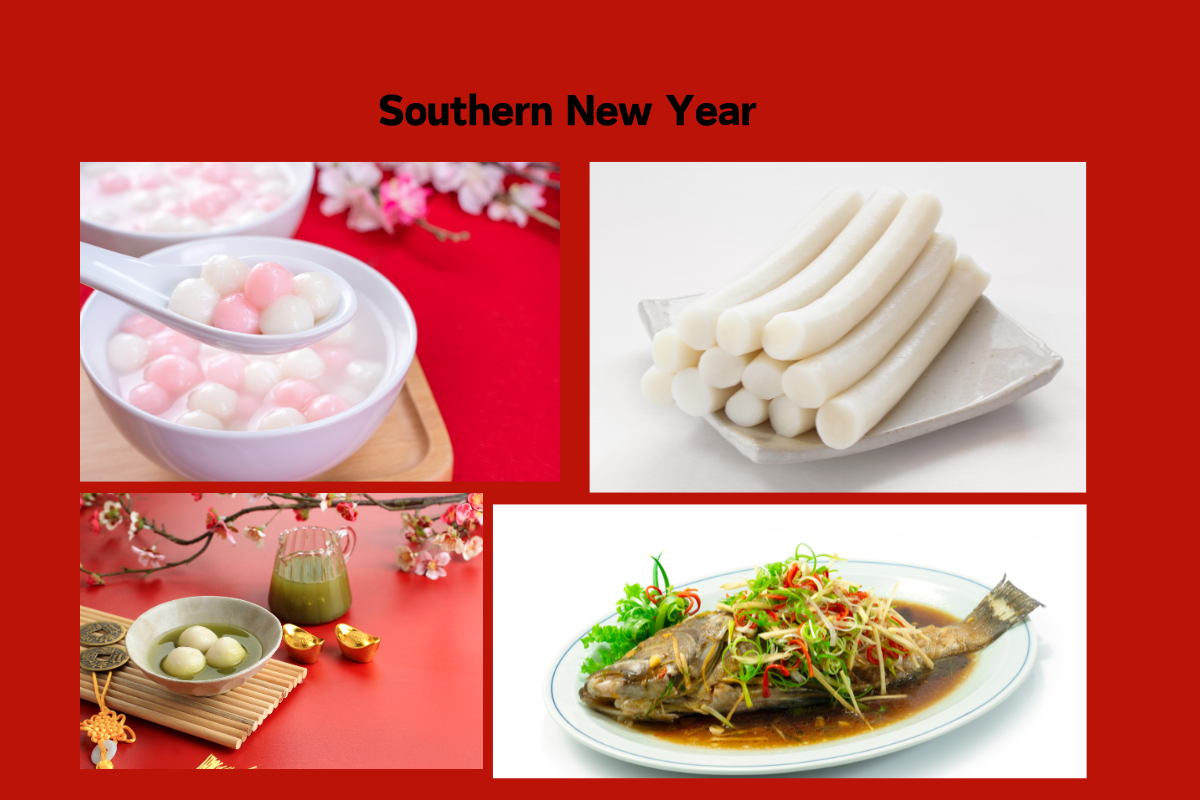A Taste of Tradition: Comparing Northern and Southern Chinese New Year Feasts
Chinese New Year is a celebration filled with traditional rituals and unique culinary delights. The north and south regions of China showcase a diverse array of flavors during this festive season. This article will guide you through the culinary contrasts between northern and southern China, exploring the distinct and delicious traditions.

Northern New Year Feast
Dumplings (jiǎo zi): Reunion Symbol
In the north, no New Year celebration is complete without dumplings. These small pockets of various fillings symbolize family reunion and harmony. Eating dumplings on New Year's Eve is a longstanding tradition in the northern regions.
Braised Dishes (dùn cài): Homey Warmth
In the cold winter of the north, people prefer heartwarming braised dishes. Stews featuring lamb or chicken become winter delicacies, offering both comfort and a wish for family health.
Noodles (miàn shí): Various Varieties
Northerners take pride in their love for noodles. During the New Year, various noodle dishes, such as hand-pulled noodles and knife-cut noodles, represent hopes for a "lengthened" and successful life in the coming year.

Southern New Year Culinary Adventure
Sticky Rice Cake (Niángāo): Stepping Upwards
In the south, celebrating the New Year involves indulging in sticky rice cake. The pronunciation of "niangao" sounds like "year high," symbolizing continuous growth and progress in various aspects of life. The chewy sweetness of glutinous rice makes niangao an indispensable treat.
Sweet Rice Balls (tāng yuán): Family Togetherness
In the south, tangyuan is a must-have during the Winter Solstice and New Year. These smooth and delicate rice balls symbolize family reunion and harmony. Enjoying tangyuan represents a wish for a close-knit family.
Seafood Feast (Hǎixiān Dàcān): Prosperity and Good Fortune
Given its proximity to the coastline, the southern region showcases seafood as a highlight during the New Year. Various delectable seafood dishes symbolize prosperity and good fortune, anticipating a year of abundance and success.

Behind the Culinary Culture
The differences in northern and southern cuisine stem from variations in climate, geography, and culture. The cold climate in the north contributes to hearty and rich northern dishes, while the warmer and humid southern climate favors lighter ingredients such as seafood and rice.
Dumplings (Jiaozi) and Tangyuan are two commonly consumed foods during traditional Chinese festivals, despite both involving dough in appearance and texture, they differ significantly in terms of preparation, shape, purpose, and taste.
Preparation:
- Dumplings: Dumplings are thin dough wrappers filled with various ingredients, typically made from a mixture of flour and water. The fillings for dumplings can include pork, beef, chicken, vegetables, etc. During preparation, the filling is enclosed within the thin dough and the edges are pinched together to form a semi-circular shape.
- Tangyuan: Tangyuan is a round sugar ball made from glutinous rice flour, usually without any filling. To make tangyuan, water is mixed into glutinous rice flour to form a dough, which is then rolled into small round balls. Sometimes, sweet fillings like saesame paste or red bean paste are added to tangyuan.
Shape:
- Dumplings: Dumplings have a flat, semi-circular shape, usually with a thick edge where the dough is sealed.
- Tangyuan: Tangyuan has a spherical shape, resembling small, round balls without a flat side.
Taste:
- Dumplings: The taste of dumplings depends on the choice of filling, ranging from savory to sweet flavors.
- Tangyuan: Tangyuan generally exhibits the chewy texture of glutinous rice and a mildly sweet taste, especially when immersed in warm sweet soup.